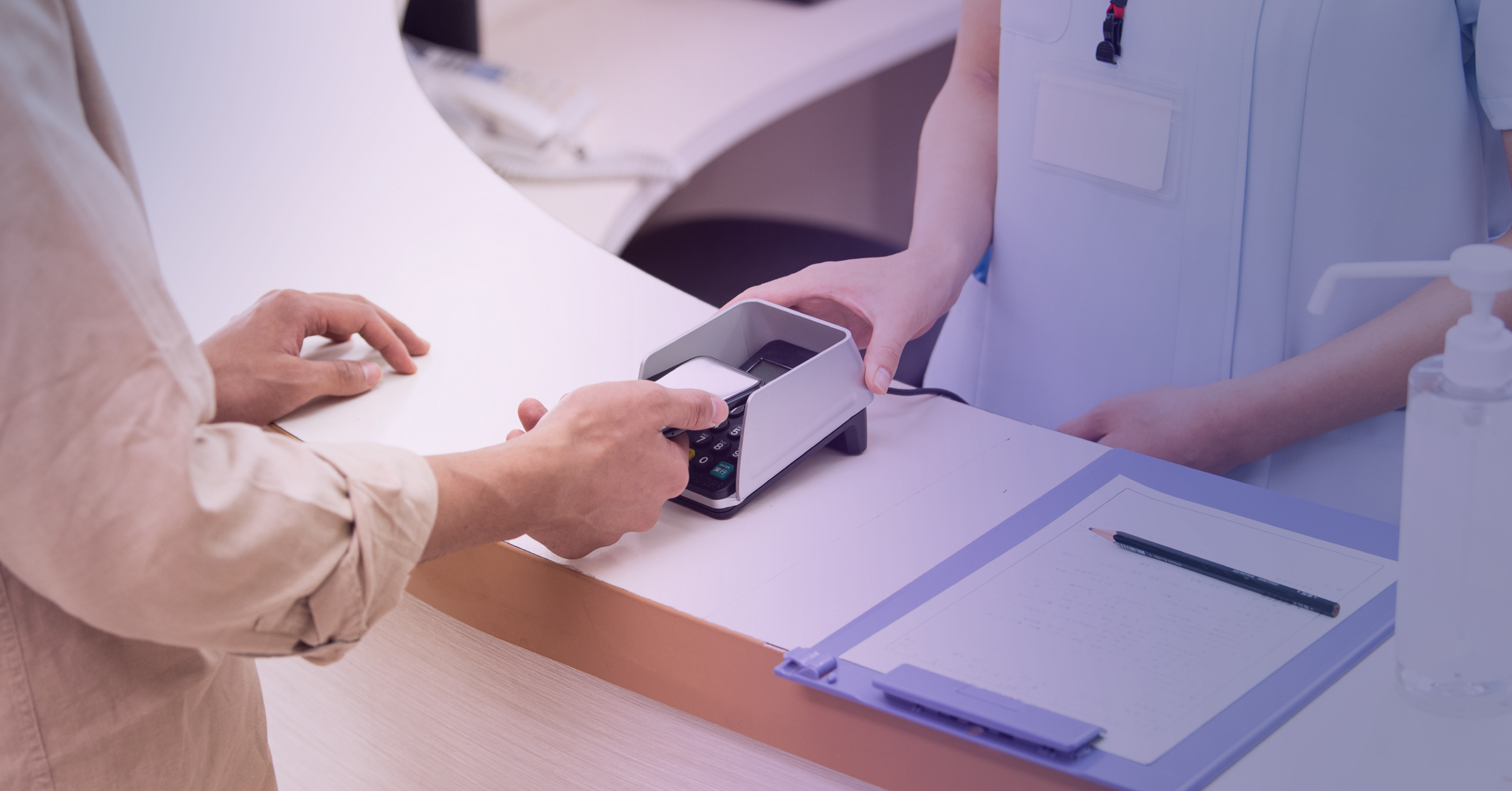Beyond Transactions: Transforming Healthcare Through Payment Innovation

The healthcare industry is experiencing a critical period of digital transformation. Organizations are working diligently to create coordinated, effective, efficient care, improve population health, and expand care coverage. However, given the complexity of healthcare, payers and providers find themselves behind retail, financial, and other consumer goods industries in terms of payment innovations. Some providers even fear that altering existing care procedures may adversely impact healthcare consumers.
Yet, it is clear that payments are shifting from a back-office function to a strategic lever. Digital payment solutions are increasing in popularity. By 2026, Bain & Company projects that consumer payment transactions through embedded platforms will more than double, reaching $3.5 trillion and earning platforms and enablers $21 billion in revenue. With 70% of consumers open to utilizing a single platform to manage their healthcare needs, adopting a digital-first payment strategy is a huge opportunity for healthcare companies.
The Opportunity
The remit for payment innovation is not a new story for healthcare. The Center for Medicare and Medicaid Innovation (CMS) has published several viewpoints on the need to transform delivery systems and payment technologies, clearly articulating the future state of payment systems including value-based purchasing, ACO shared savings, episode-based payments, care management feeds, and data transparency.
However, many healthcare organizations feel unprepared to tackle these challenges. Shrinking budgets, competing investments, minimal digital payment expertise, and the need to shift ways of working have been barriers for healthcare organizations to accommodate these innovations. Yet, to improve patient and member satisfaction, leaders must prioritize the development of digital payment experiences across key points of care, including improving the digital front door, prioritizing digital-first shopping, and simplifying point-of-care and post-care delivery payments.
Improving the Digital Front Door
In healthcare, the digital front door refers to the collection of technologies providers use to improve and manage the patient experience. Many organizations invest in a single platform to manage insurance IDs, policies, appointment bookings, payments, follow-up care, prescriptions, and more. Oftentimes, this takes place in a mobile app or authenticated portal experience.
When considering payment innovation, organizations should evaluate how these new capabilities will facilitate the use and support of the existing digital front door capabilities. Most digital front doors focus on interoperability, ensuring the smooth flow of data across systems. Improve the digital front door by creating a cohesive experience beginning with patient empowerment, leading to financial transparency.
Digital-First Shopping
Provider and service research is the first indicator of service and patient satisfaction. Consumer organizations such as US Bank and other financial institutions have developed calculators and pre-cost assessments to provide transparency to consumers during consideration. Logix Credit Union offers a pre-application product finder with a needs assessment, estimated rates and payments on eligible loans, and evaluation tools to illuminate key considerations such as the total cost of financing. Healthcare organizations can learn from financial institutions in terms of experiences that demonstrate how to evaluate the cost of service before booking.
Consider providing financial transparency to consumers before they receive care to improve access and reduce ambiguity. Post-service payment methods should be easy to understand, including benefits and terms of use. This is also the time to guide consumers towards smarter decisions about payment plans. Innovation is already happening in healthcare—Change Healthcare offers a suite of tools to help consumers compare and save on healthcare costs via the solution True View. Castlight Health provides an online marketplace for health services, and HealthSparq offers cost transparency tools to ensure members have the information they need to make decisions about their care.
Point-of-Care
During the delivery of a service, point-of-care choices can ease the financial burden of patients. Consider how to market telehealth services (within the digital front door and through physician advocacy) to improve access, increase speed of care, and lower costs for patients and providers. Ensure that financial options are discussed at the start of care, communicating choices clearly.
Post-Care Delivery
Once a service has been delivered, healthcare providers can shift from transactional care to the patient experience with clear, concise communication on payment options. Consider providing options such as payment plans, paperless billing, and automated bill pay to increase time to pay and frequency of payment. Ensure these options are available within mobile applications tied back to the digital front door for ease of use.
Traditional loyalty programs can also serve as inspiration for healthcare providers. SmartPay Rewards, a mobile app for gas stations and convenience stores, offers customers discounts and rewards in exchange for using its embedded bank account payments tool. Consider incentives and other experience satisfiers to get more customers utilizing digital payment solutions.
Building the Business Case
Digital payment innovation provides value to both organizations and consumers. Building a business case can be made across several key considerations.
The Value to Clinicians, Providers, and Insurers
The value to healthcare organizations includes increasing customer loyalty, faster payment collection, operational efficiencies, and data-driven decision making.
| Increased Revenue | Digital and automated payments give hospitals and providers direct control over revenue streams, reducing debt and time to claims processing. As more patients pay for healthcare services and receive them online, hospitals can handle a larger flow of patients. |
| Increased Customer Loyalty and Engagement | By offering improved and convenient payment options, companies can improve retention, and loyalty, and reduce the likelihood of switching providers. They can also increase patient satisfaction by providing transparency and direct lines of communication. |
| Increased Operational Efficiencies | By streamlining payments and billing processes, employees and team members can be freed up to improve patient care rather than tackle administrative functions. |
| Data-Driven Decisioning | Embedded payments can give healthcare companies more data about the customer, enabling them to offer more personalized products and services and gain more insights into the cost and effectiveness of various treatments and procedures. |
The Value to Patients and Members
The value to healthcare organizations includes the ability to seek, purchase, and manage healthcare costs, improving transparency and affordability.
| Ease of Use & Flexibility | By providing transparency and understanding in services and better solutions for payment and documentation, members can pay bills more readily with less confusion. |
| Enhanced Customer Experience | Payments become more accessible and frictionless, being integrated into the platform users already engage with. Patients can focus on their health rather than worrying about financial logistics. Additionally, solutions with embedded fintech usually have extra helpful features like medicine reminders and health tracking. Thus, patients can access services that are unavailable in traditional healthcare. |
| Affordability | As the population ages and health care spending soars, individualized patient payment plans like buy now, pay later (BNPL) can be a lifesaver, easing the funding gap for medical treatment and increasing the collections rate. More than 50% of those who were aware that their medical providers offered flexible payment options took advantage of them. |
| Extended Reach | Integrating embedded payments into telemedicine and remote care services can help extend the reach of healthcare services to underserved populations. |
| Enhanced Security | Embedded payments can provide greater security as financial transactions can be processed more efficiently and securely. |
Embracing Consumerism
To get started, the first step is to determine the payment methods that will bring the most value to both the organization and the consumer. Where can your organization benefit most from implementing payment solutions? Are digital front door capabilities already available, or will point-of-care solutions offer the most value?
Once a payment program is identified, consider how it should be prioritized and displayed to consumers to optimize conversion and costs. Additionally, consider express checkout solutions, easing customer friction. For inspiration, the Starbucks app saves credit or debit card information for one-click payments while customers earn points for using the app.
Throughout the journey towards consumerism, regulatory, compliance, HIPAA, and data and privacy considerations should be considered. Health providers must ensure that only the necessary shared information is sent between financial institutions and that payment consent is obtained before any transaction is made. Additionally, robust security measures must be implemented to protect against unauthorized access.
It is clear there are numerous benefits to embracing consumerism in healthcare by prioritizing payments innovations. However, these projects are often lengthy programs that require deep cross-functional collaboration and coordination. Partnering with an organization to assist in opportunity identification, business case development, and product management can expedite the time to value.


